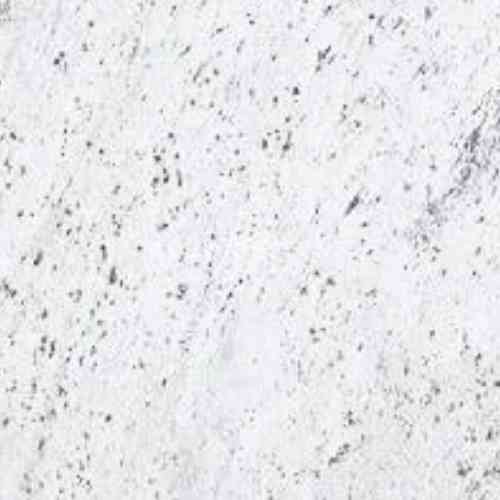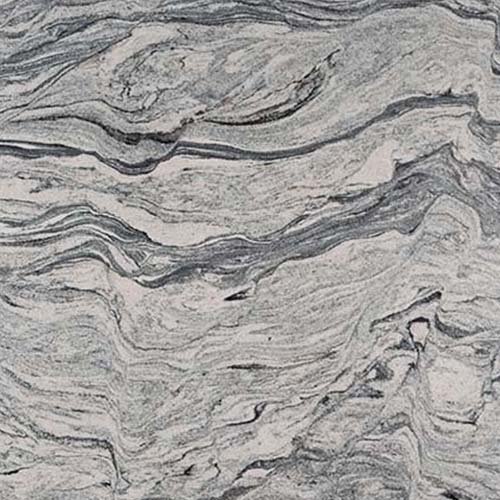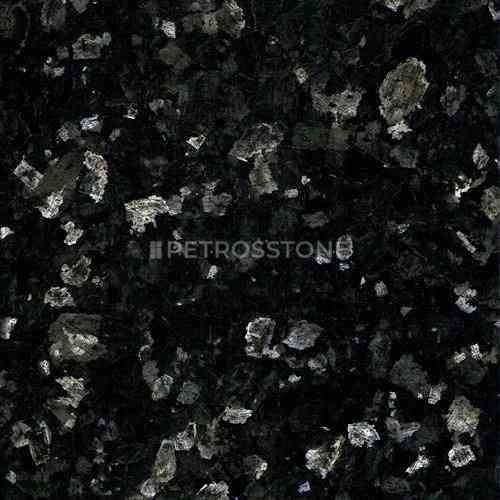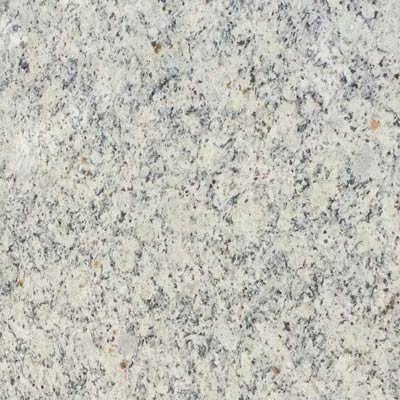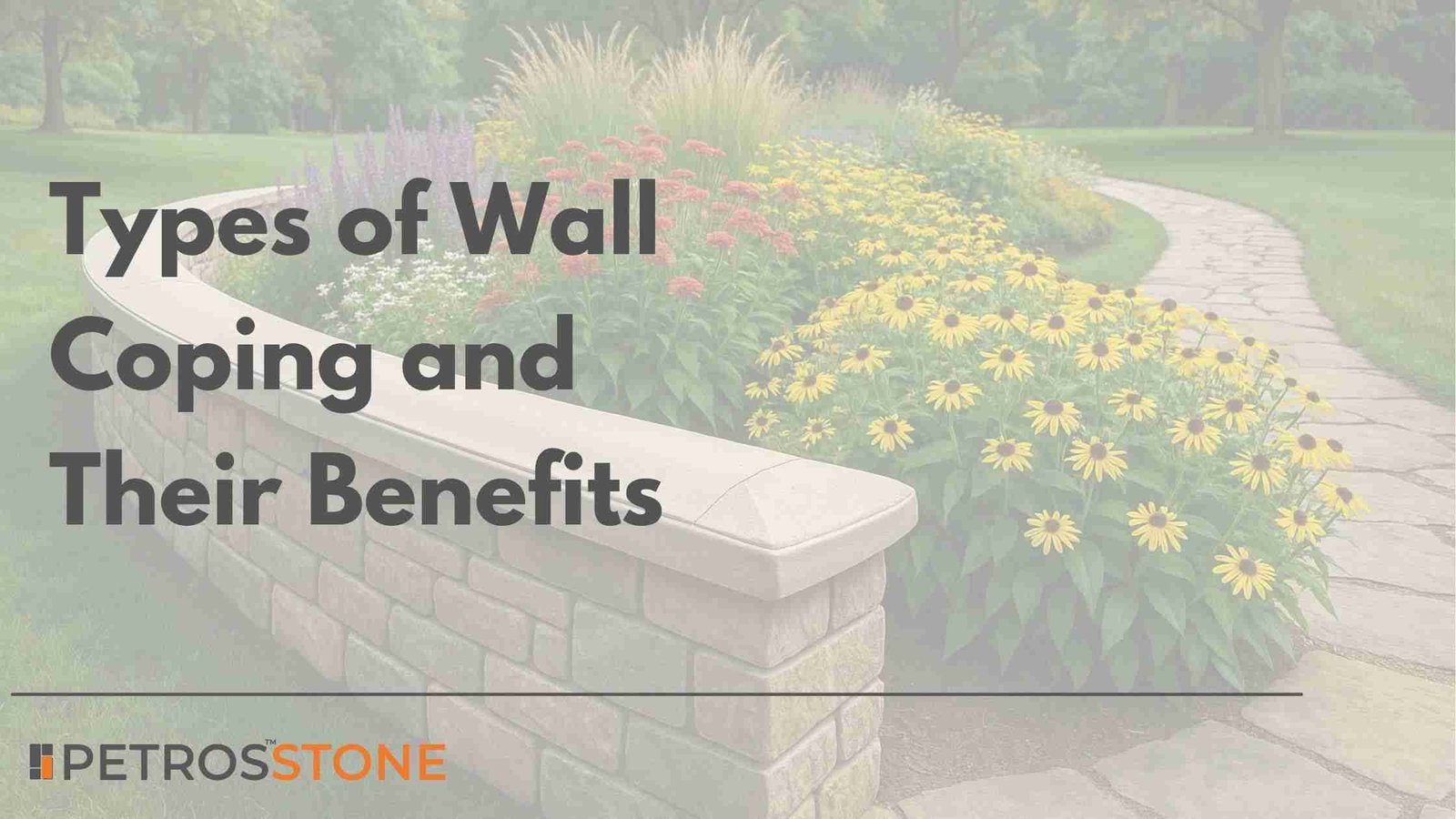
Wall coping refers to the safety guard or cap that is fitted to the top of the edges of the walls, particularly boundary, garden, parapet, and retaining walls. Its main purpose is to protect the wall from water damage, prevent moisture penetration into the wall structure, and provide an aesthetically pleasing finish.
The wall coping extends the longevity of the wall by offering protection against environmental factors, deterioration, and general wear.
In this article, we will come across various types of coping materials that suit different weather conditions, financial considerations, and architectural styles.
Functions of Wall Coping
Weather Protection
- Prevents rainwater from soaking into the top or core of the wall. This reduces harm caused by freezing and thawing.
- It also stops water from building up on wall surfaces by cutting down on leaks and damp areas.
Structural Durability
- Safeguards the wall’s upper surface from wear, erosion, and weather effects.
- Boosts strength and spreads out weight to stop cracks from forming along the edges.
Aesthetic Appeal
- Provides a clean and smooth finish that improves the building’s overall look.
- Available in many colors, shapes, and surface styles.
Safety & Functionality
- Deters birds from sitting on wall tops when made of slippery metal or shiny stone.
- In parapet or roof-edge systems, it helps channel water away from the building surfaces.
Types of Wall Coping by Material
1. Stone Wall Coping
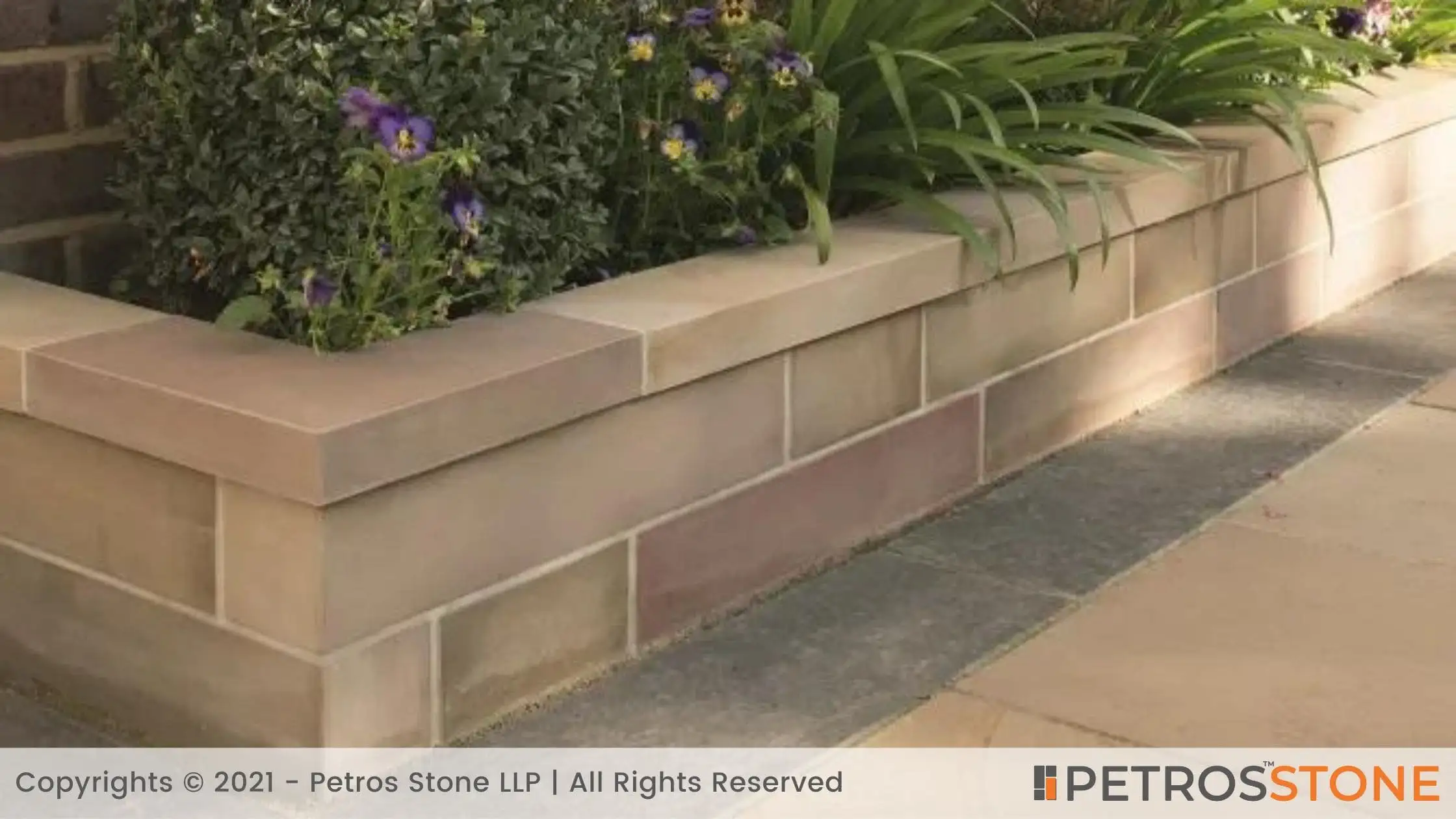
These can be crafted out of natural stones such as granite, sandstone, or limestone, featuring a superior finish and widespread application.
Advantages:
- Highly resistant and durable
- Provides an elegant, natural appearance
- Low maintenance and extended lifespan
Disadvantages:
- Higher price point compared to alternatives
- Heavy, often needing professional installation
- Color options are limited by stone type
2. Concrete Wall Coping
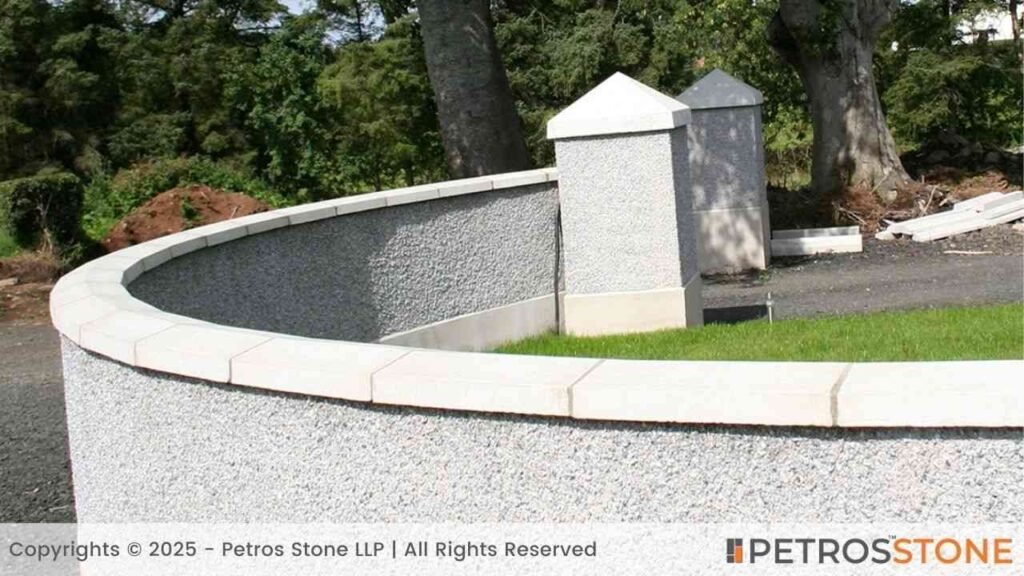
Modern and cost-effective coping is typically constructed from precast or site-cast concrete units.
Advantages:
- Cost-effective and widely available.
- Customizable shape and finish options.
- Long-lasting and suitable for varied climates
Disadvantages:
- Susceptible to cracking without proper reinforcement or installation.
- Shows wear and discoloration over time.
- Less luxurious appearance than natural stone
3. Brick Wall Coping
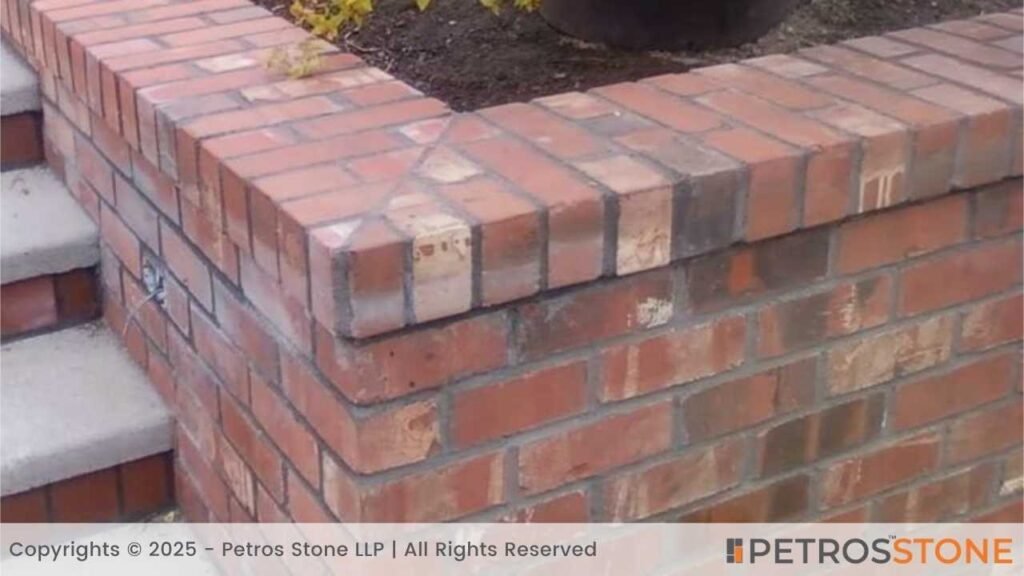
Utilizes purpose-made or standard bricks laid along the wall top to complement existing brickwork.
Advantages:
- Creates visual harmony with traditional brick walls
- Installation is possible using standard techniques.
- Reasonably priced and locally available.
Disadvantages:
- If not properly sealed, the water resistance diminishes over time.
- Mortar joints may demand regular upkeep.
- Limited design variations and aesthetic options.
4. Metal Wall Coping
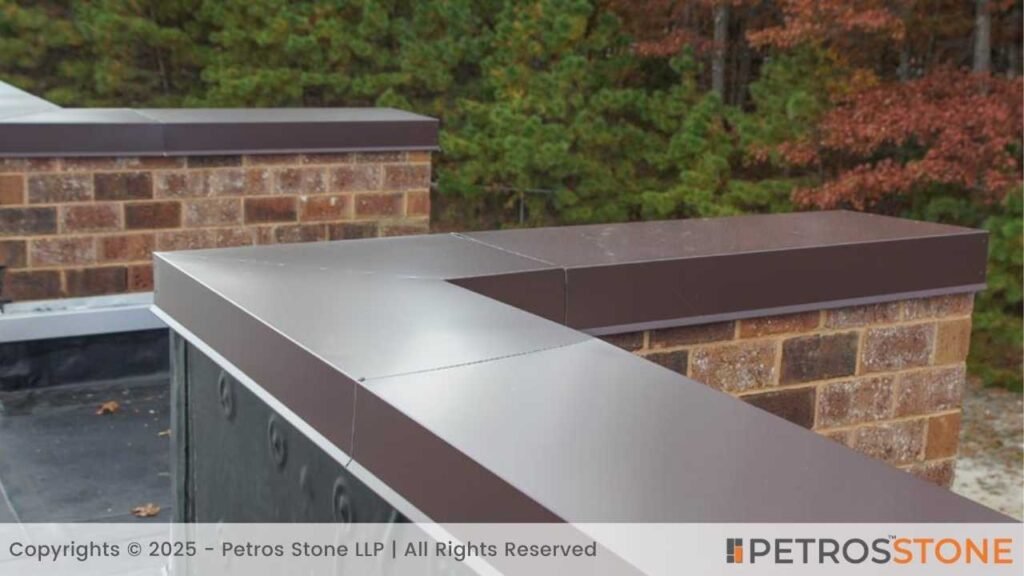
Contemporary wall protection utilizes thin metal sheets or panels, commonly incorporating materials such as aluminium, copper, or stainless steel.
Advantages:
- Lightweight construction enables easy handling and installation.
- Superior corrosion resistance (particularly when coated or made from stainless steel or copper)
- Offers a sleek, contemporary aesthetic look
Disadvantages:
- Susceptible to noise generation during rainfall or seismic activities.
- Vulnerable to denting and surface scratches.
- Premium materials like copper or zinc command higher prices.
5. Tile Wall Coping
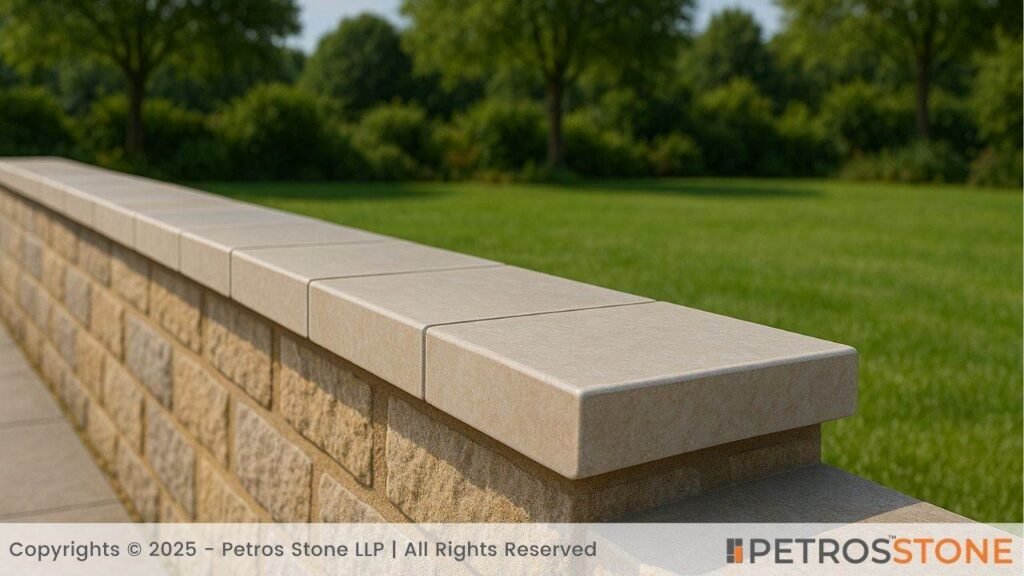
Ceramic or porcelain capping elements, commonly selected for ornamental purposes on parapets or garden wall structures.
Advantages:
- Extensive design flexibility through diverse color schemes and pattern selections.
- Water-resistant properties and easy maintenance.
- Ideal for garden landscapes and poolside spaces.
Disadvantages:
- Relatively fragile and prone to impact damage..
- Requires regular maintenance of grout lines and joint sealing.
- May prove slippery when wet.
6. Clay Wall Coping
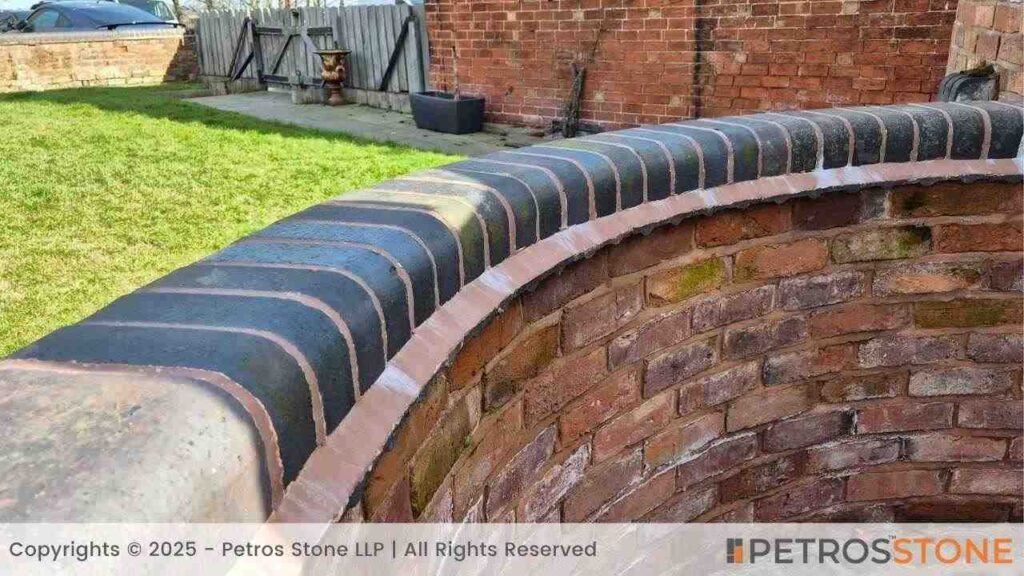
Conventional coping elements crafted from kiln-fired clay materials, offering a rustic, warm appearance.
Advantages:
- Sophisticated appearance and excellent thermal properties.
- Long-lasting and environmentally friendly
- Perfectly complements heritage and traditional architectural styles.
Disadvantages:
- Susceptible to damage during installation or handling.
- Limited design and style options are available.
- Moisture retention issues, if unsealed or unglazed.
7. uPVC and Composite Wall Coping
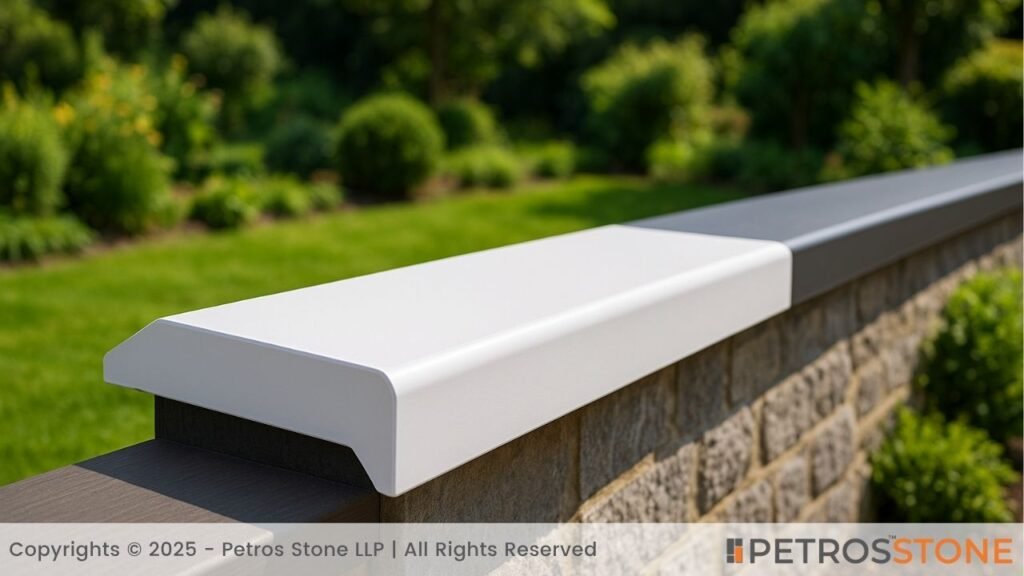
Modern coping solution that utilizes synthetic materials, such as unplasticized PVC or fibre-reinforced composites.
Advantages:
- User-friendly installation and handling features.
- Weather-proof and UV-resistant.
- Budget-friendly with minimal maintenance requirements.
Disadvantages:
- It could distort under extremely high temperatures.
- Less durable compared to metal or stone alternatives.
- Prone to discoloration with prolonged sun exposure.
8. Glass Tile Wall Coping
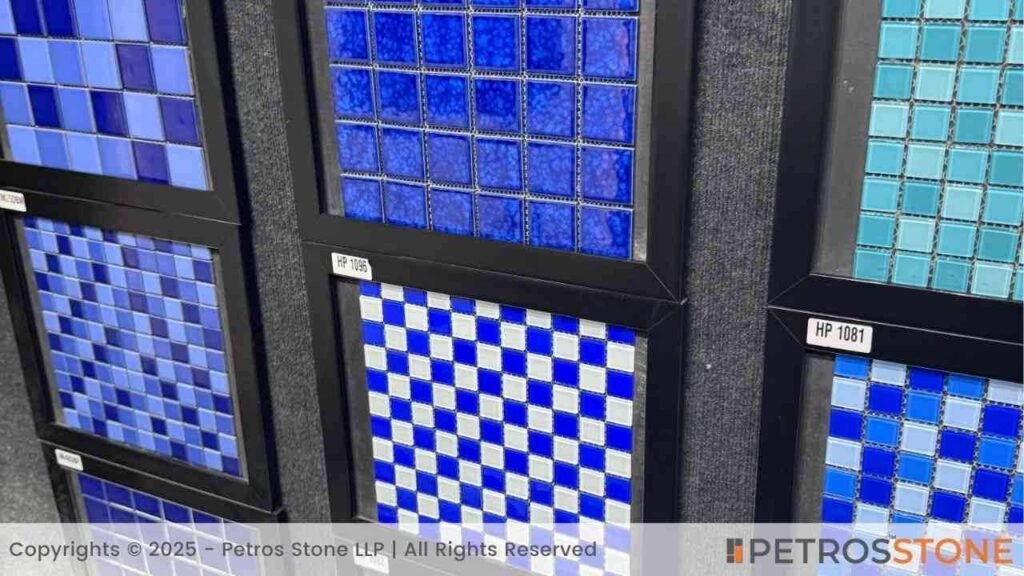
Utilizes specially treated tempered or laminated glass panels for a luxurious, modern finish on walls and balconies.
Advantages:
- Creates an elegant and modern visual statement.
- Weather and corrosion resistant.
- Enhances the hallmarks of minimalist architecture.
Disadvantages:
- Costly and delicate.
- Demands meticulous installation.
- Regular maintenance is needed to prevent cloudiness.
Rubber and Synthetic Wall Coping
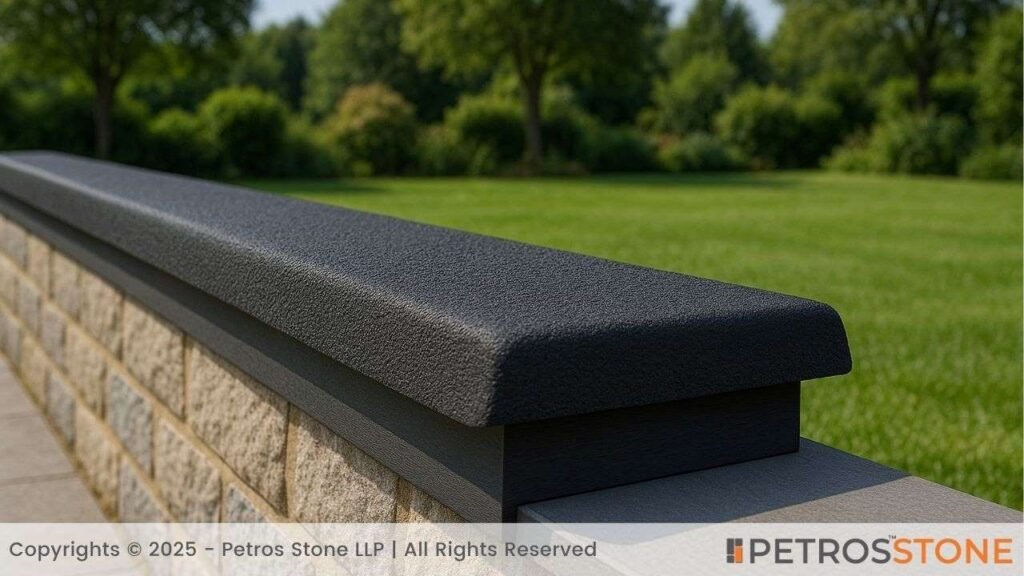
Manufactured from recycled rubber or similar flexible synthetic materials, particularly suitable for use in playgrounds and garden wall applications.
Advantages:
- Soft, shock-absorbing, and fully child-safe.
- Easy to install and retain.
- Manufactured using environmentally sustainable materials.
Disadvantages:
- Limited availability of design variations and color selections.
- Vulnerable to increased wear when continuously exposed to sunlight.
- Emits a distinct rubber odour during initial installation.
Types of Wall Coping by Design
Flat Wall Coping
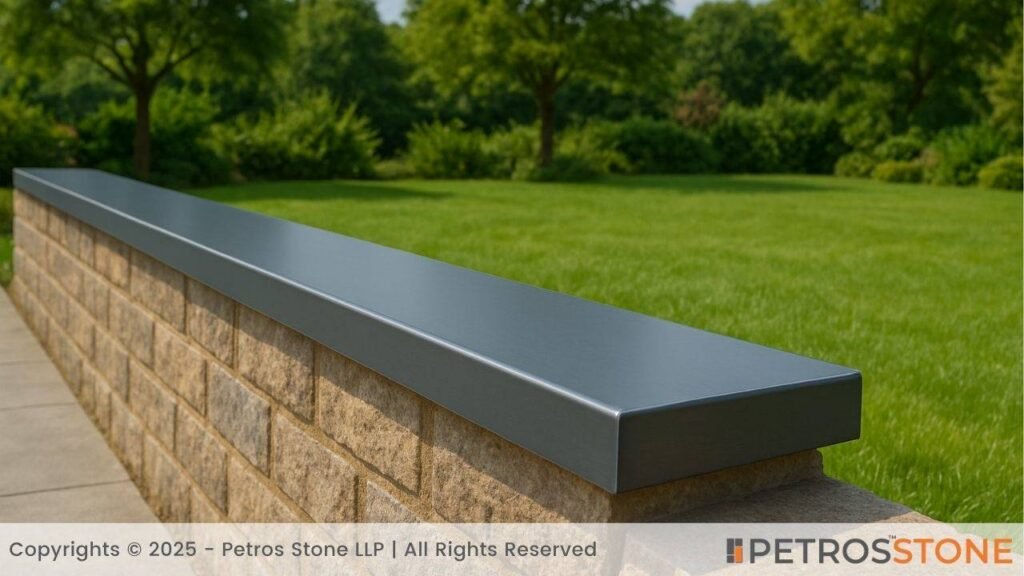
Features a level top cap, typically with a gentle slope to promote water drainage.
Advantages:
- Sleek, contemporary look.
- Easy to install and retain.
- Adaptable for installation on a broad array of wall surfaces.
Disadvantages:
- Drains water less effectively when subjected to heavy rainfall.
Due to its design, the surface may accumulate dirt and debris.
Sloped Wall Coping
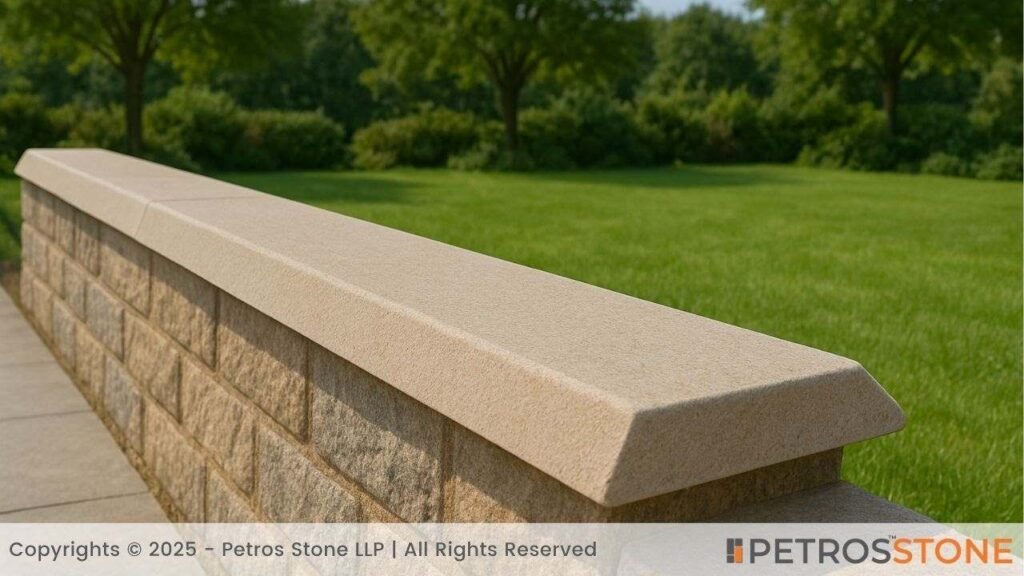
Engineered with an angular design, directing water flow to just one side of the wall.
Advantages:
- Outstanding water displacement capabilities.
- Minimizes water accumulation risks.
- Practical design suitable for outdoor applications.
Disadvantages:
- Coping with a sloped edge creates a visual imbalance from certain viewing angles.
- Potential safety hazard in high-traffic areas under wet conditions.
Saddle (Ridge) Wall Coping
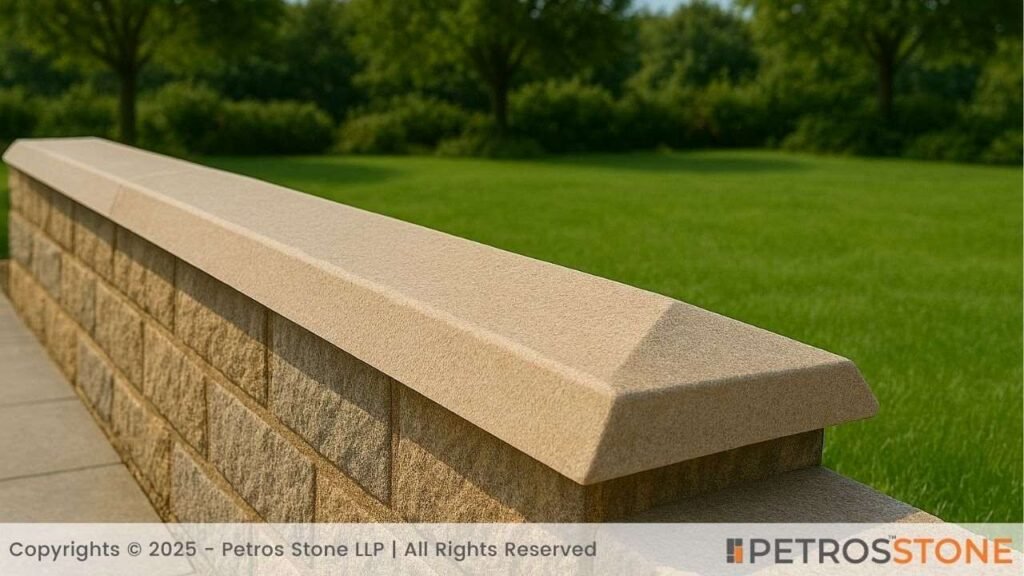
A coping featuring a central ridge or peak that slopes down on both sides.
Advantages:
- Excellent water shedding from both sides.
- Enriches the wall’s architectural appeal.
- Suited to freestanding boundary walls.
Disadvantages:
- Complex installation requirements.
- Costlier than flat or single-slope designs.
Stepped Wall Coping
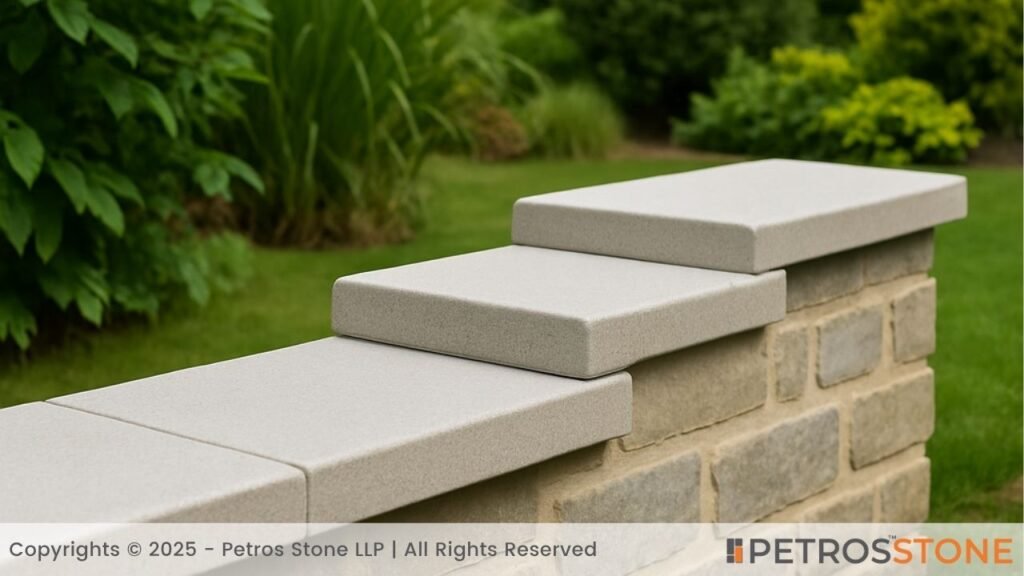
Distinguished by its stair-step pattern, the product is primarily used for ornamental purposes or for constructing tiered walls.
Advantages:
- Endows the wall with an eye-catching, distinctive look.
- Suitable for sloping or retaining walls.
- Enhances the depth of a wall’s design.
Disadvantages:
- Less efficient for water drainage.
- May allow debris and moisture to collect within the step joints.
Weathered Wall Coping
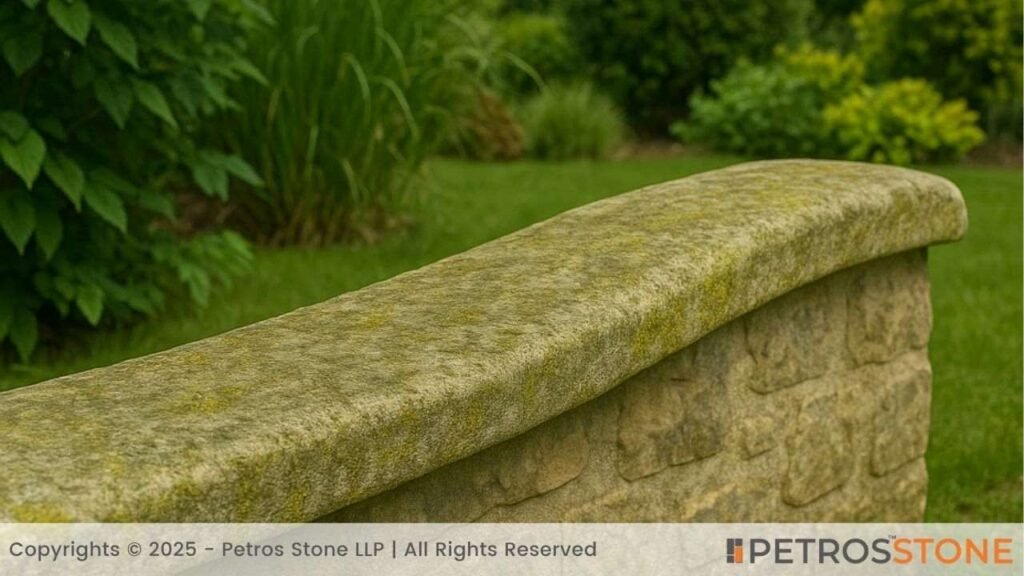
Constructed with a gentle slope and curved edges that push water away from the wall’s surface.
Advantages:
- Guides water outward, thereby reducing wall staining.
- Ideally suited for exposed zones subject to heavy rainfall.
- Easily integrates into traditional architecture.
Disadvantages:
- Typically costs more than conventional flat coping.
- Proper installation is crucial to preserve slope direction.
Roof Wall Coping
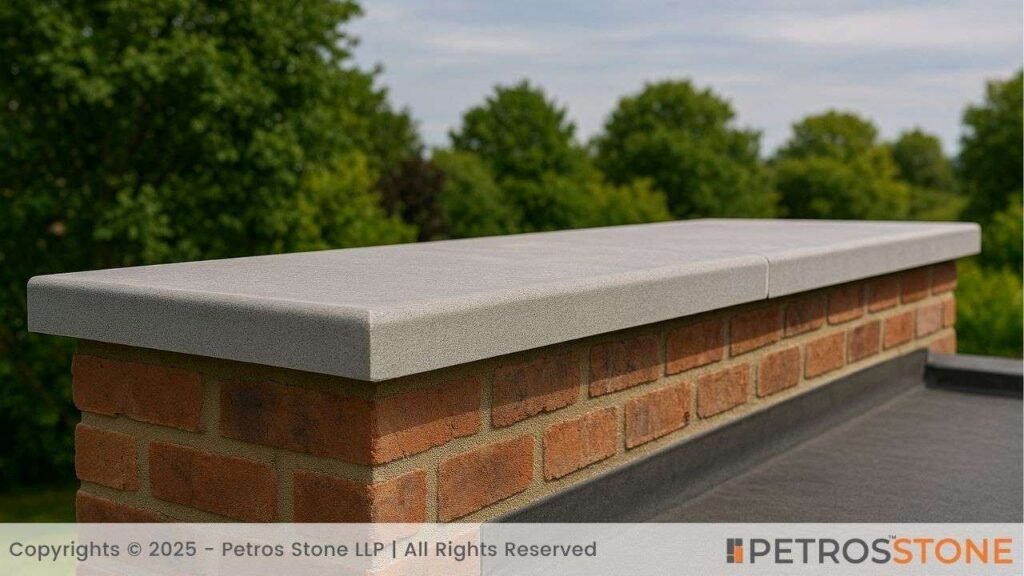
Fabricated especially for rooftop parapet walls, it typically features integrated flashing systems.
Advantages:
- Guards both the wall and the roof against water intrusion.
- Typically features overhangs and drip edges.
- Essential to the integrity of the building envelope.
Disadvantages:
- Professional installation is required to prevent the roof from leaking.
- Higher initial investment due to specialized waterproofing components and materials.
Outdoor Wall Coping
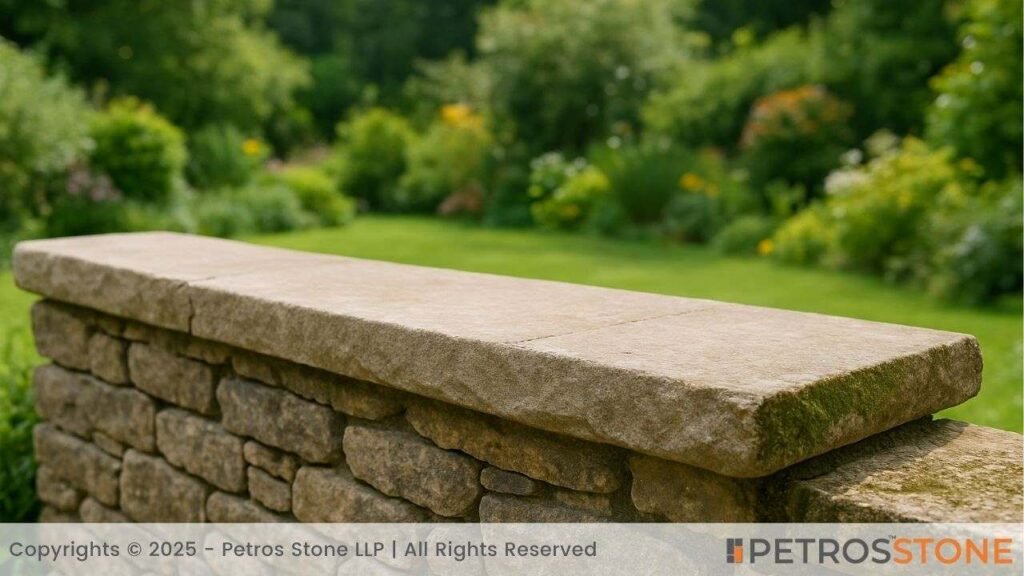
Advantages:
- Suitable for extended outdoor performance.
- Often fashioned for slip resistance while remaining plant-friendly.
- Designed in a broad range of materials and finishes.
Disadvantages:
- Routine upkeep may be required when the product is exposed to moderate to heavy weather conditions.
The style should be chosen to harmonize carefully with the surrounding landscape design.
Installation Techniques
Surface Preparation
- Clean the wall edge: Clear any loose material and erase any ridges.
- Lay a uniform mortar bed: Ensure sufficient thickness for balanced seating.
- Verify the top of the wall: Verifies uniform plate alignment.
Fixing Methods
- Mortar bed: The conventional method for setting stone, brick, and concrete.
- Mechanical fixings: Clips, screws, and brackets—frequently used with metal, tile, and uPVC.
- Adhesives: High-bond construction adhesives suitable for some composites and tiles.
- Flashings: Metal flashings are placed beneath the coping on the roof and parapet walls.
Joints and Sealants
- Sealing butt joints with mortar pointing.
- Interlocking systems (particularly in concrete applications).
- Joint sealants: Silicone or polyurethane applications at corners and intervals, typically spaced 1-2 meters apart.
- Expansion joints: Essential for metal and long-span elements to accommodate thermal movement.
Price of Wall Coping
Material selection, project scope, installation complexity, and geographical location influence pricing significantly. Below are approximate cost ranges per linear meter in USD:
| Material | Low End (USD/m) | High End (USD/m) | Notes |
| Clay coping | 2.40 | 6.00 | Traditional styles |
| Stone coping | 9.60 | 30.00 | Natural stone like granite |
| Concrete coping | 3.60 | 9.60 | Precast standard profiles |
| Brick coping | 1.80 | 4.80 | Special-shaped bricks |
| Metal coping | 6.00 | 48.00 | Aluminium to premium copper |
| Tile coping | 4.80 | 14.40 | Ceramic or porcelain |
| uPVC/composite | 3.60 | 10.80 | Weather-resistant synthetic |
| Glass coping | 18.00 | 60.00 | Tempered or laminated glass |
| Rubber/synthetic | 6.00 | 14.40 | Recycled rubber profiles |
Note: These estimates exclude installation labor costs and additional materials. Labor and sealant costs must also be added, and typically range from USD 2.40– USD 9.60 per linear meter, varying according to complexity.
Applications of Wall Coping
Parapet Walls
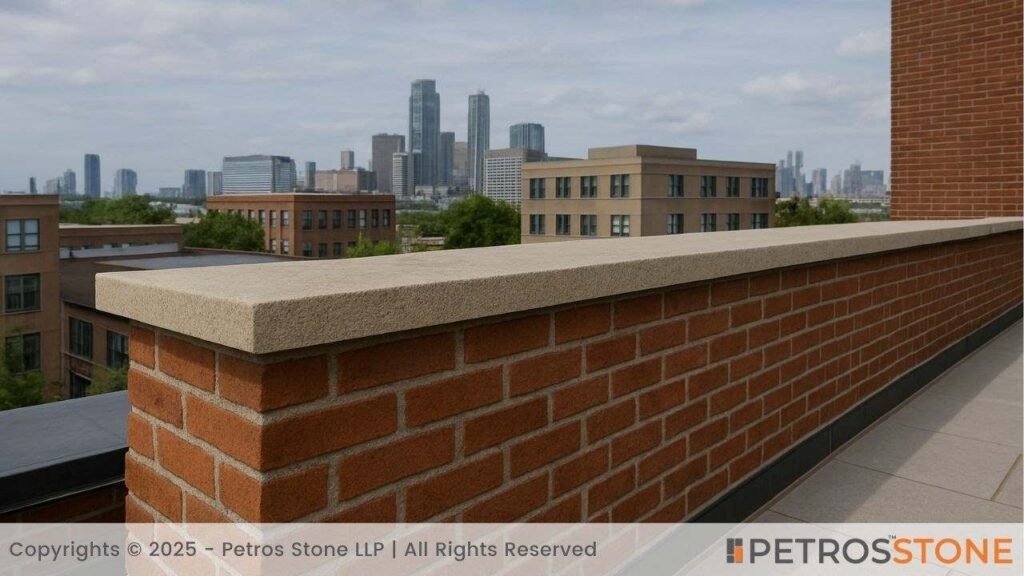
An absolute necessity on roofs, terraces, and stair landings. It is often paired with stepped or roof parapet coping to enhance drainage while using flashing to prevent water ingress into the roof structure.
Compound and Boundary Walls
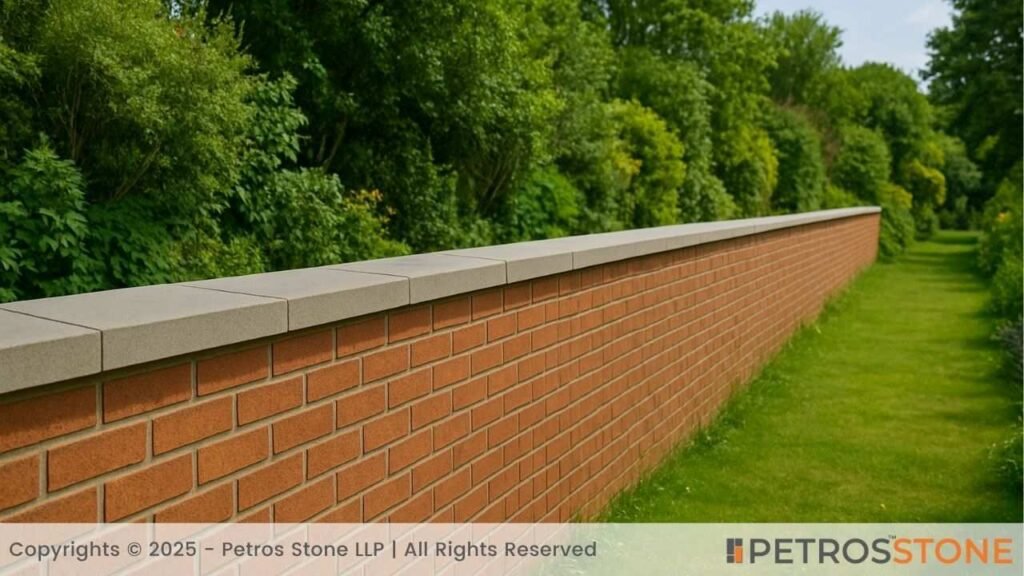
Installed atop boundary walls. Generally features a sloped, saddle, or weathered profile design that serves the dual purpose of discouraging climbing attempts while ensuring effective protection against water penetration.
Garden and Retaining Walls
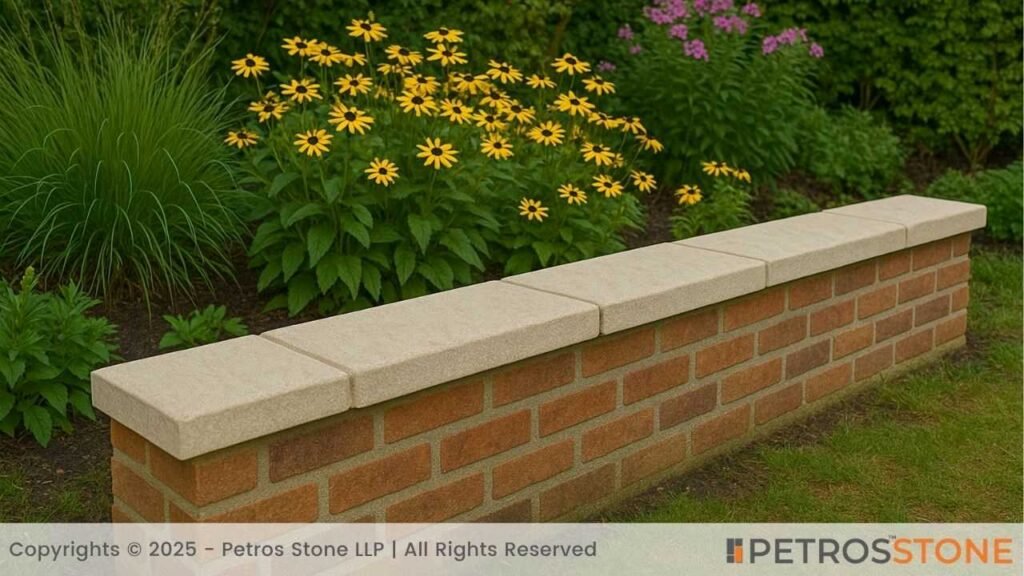
Flat or sloped coping on garden walls. The retaining walls are finished with weathered or stepped coping or flat coping to control the water flow, soil pressure, and to provide seats.
Roof Edges
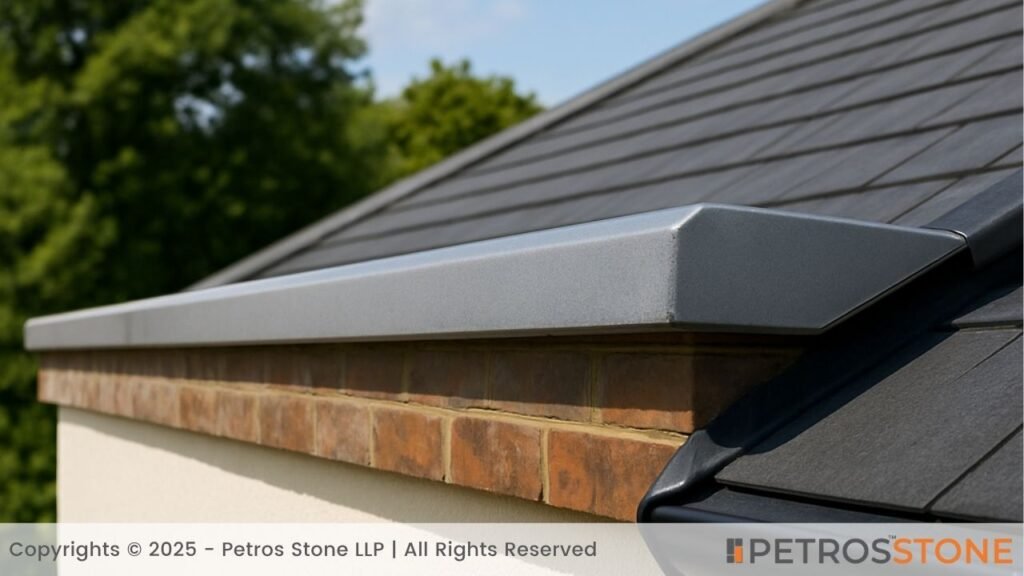
The roof wall coping (usually of metal or concrete) combines with embedded flashings to cover the rooftop and parapet waterproofing.
Maintenance and Durability
Table 1: Maintenance Requirements of Wall Coping by Material
| Material | Maintenance Tasks |
| Stone Coping | Occasional cleaning, inspect for cracks, re-point joints as needed |
| Concrete Coping | Check for cracks or spalling, clean the surface, and reseal every few years |
| Brick Coping | Inspect mortar joints, clean moss/dirt, and apply water repellent if needed |
| Metal Coping | Clean debris, inspect for rust or corrosion, and maintain protective coating |
| Tile Coping | Replace cracked tiles, clean grout lines, re-seal tiles and joints |
| Clay Coping | Inspect for chips or breaks, reseal occasionally, and clean the surface |
| uPVC/Composite | Wipe clean with water, inspect joints and seals, re-caulk if gaps appear |
| Glass Coping | Clean regularly to remove smudges and dust, check seals and fittings |
| Rubber/Synthetic | Clean with mild soap, inspect for cuts/tears, re-glue loose edges |
Table 2: Estimated Durability of Wall Coping by Material
| Material | Expected Lifespan | Durability Notes |
| Stone Coping | 50+ years | Extremely durable; minimal wear over time |
| Concrete Coping | 30–50 years | Long-lasting with proper sealing and maintenance |
| Brick Coping | 30+ years | Can last decades with proper joint care |
| Metal Coping | 40+ years (depends on metal) | Stainless steel and copper last the longest |
| Tile Coping | 20–30 years | Cracks may reduce life; grout must be maintained |
| Clay Coping | 30+ years | Durable but can be brittle if not sealed properly |
| uPVC/Composite | 15–25 years | Good durability with minimal care in mild climates |
| Glass Coping | 20–30 years | Lasts long if not damaged; hardware and seals need upkeep |
| Rubber/Synthetic | 10–20 years | Softer material; wears faster under UV exposure |
Cost and Budget Considerations
Budget-friendly options:
- Brick or simple precast concrete- cheap material, labor costs.
- uPVC- low maintenance, easy to install.
Mid-range:
- Sloped precast concrete or tile – respectable durability, good aesthetics.
Premium:
- Quality metal, glass, or natural stone, high initial price, long-lasting, luxury finish.
Important Considerations:
- Labor: Skilled stonemasons or metalworkers add to the cost.
- Complex designs: Saddle or stepped require more cutting/fitting.
- Climate: Wet regions benefit from sloped or weathered coping.
- Add-ons: Flashing, sealants, or mechanical clips cost extra.
Summary
Wall coping has a practical and decorative use. It resists water penetration, increases strength, specifies style, and lengthens wall life. There are numerous material options, stone, concrete, metal, tile, clay, glass, uPVC, synthetic, with their own characteristics, pricing and requirements in their installation.
Type of design is also a factor: flat, sloped, ridge, stepped, weathered, roof-edge, or outdoor-specific copings all fit particular contexts and needs. Coping requires a pitched combination of surface preparation, selection of an effective fixation mode, considerations of thermal growth, and appropriate sealers.
Having picked it out carefully and employed it in the right manner, wall coping is a modest expenditure which will keep your property both secure and enhanced in appearance for decades.
Feel free to get in touch for a free consultation, quote, and get a detailed understanding from our experts here at Petros®. Visit https://petrosstone.com/ or call +91-8446360361 and WhatsApp
Brown Granite
White Galaxy Granite
Blue Bahia Granite
Silver Cloud Granite
Black Pearl Granite
Dallas White Granite



